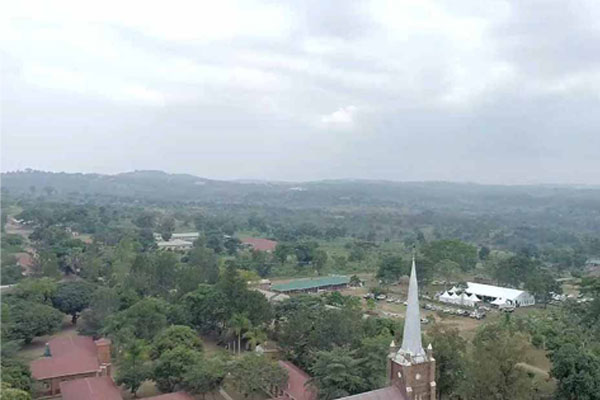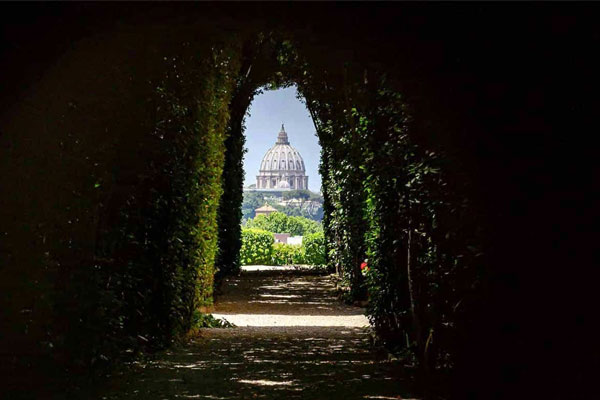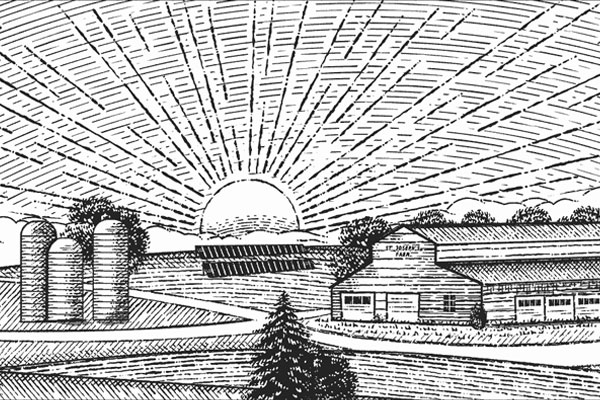On a typical gray, rainy day along Ireland’s west coast, Tom Nee leads a group of Notre Dame students around the grounds of his sheep farm along the Killary Fjord. On the far side of the inlet are steep hills, with hints of jagged stone peeking out through a blanket of green. On the near side, the students watch as Nee leads a sheepherding demonstration. He gently vocalizes commands to his sheepdog, Holly, who in turn jogs on either side of the herd, moving and coaxing the animals into the desired position.
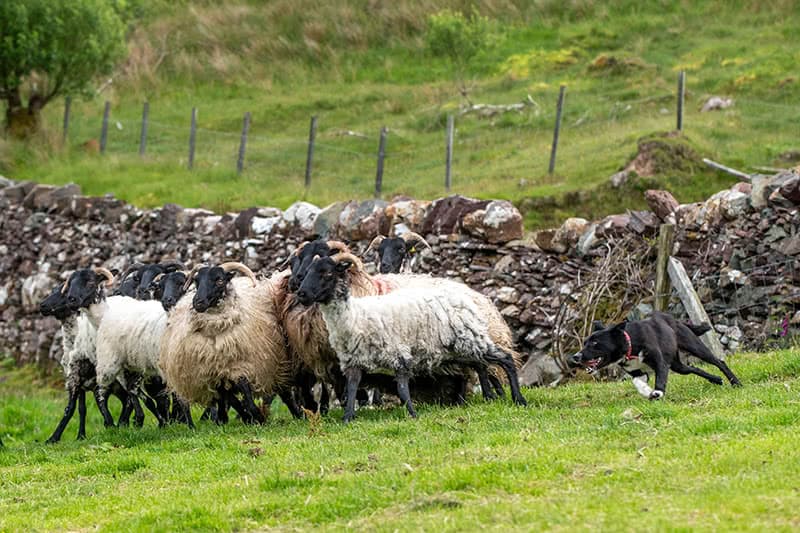
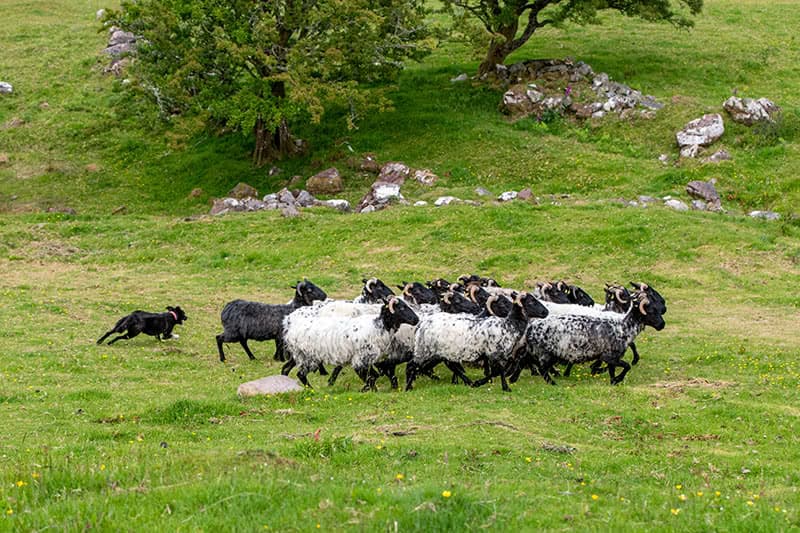
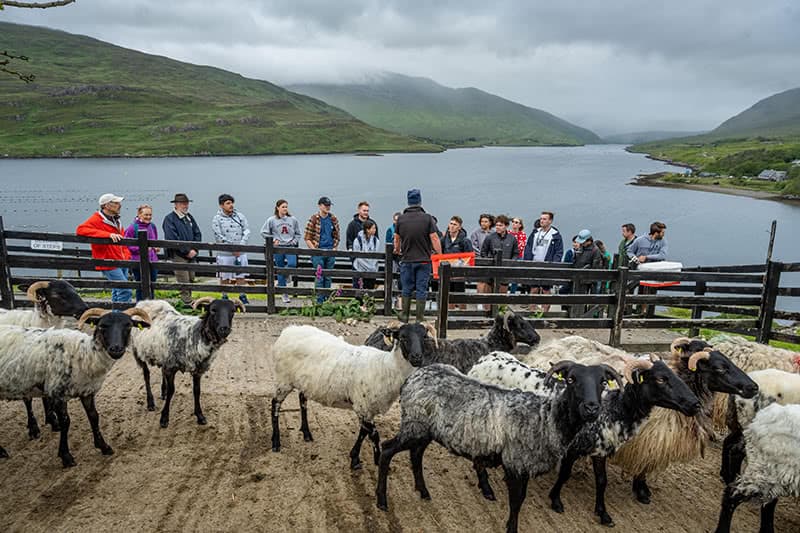
When the demonstration is over, Nee guides the group over a gentle incline some 200 yards away, stopping at a small cliff that looks as though it had been chiseled into existence. Layer upon layer of dark matter is exposed beneath the green of the topsoil. As the spongy ground beneath them likely signaled, this is a bog. The near-black soil is peat.
There are peculiar rectangular indentations cut into the earthen wall, and soon Nee shows how those features came to be. He takes a tool known as a slean — a sort of mix between hoe and shovel and post digger — and pushes it into the soil. When Nee draws the slean from the earth, he deposits a rectangular log of peat onto a pile. The logs are stacked by the pit to dry.
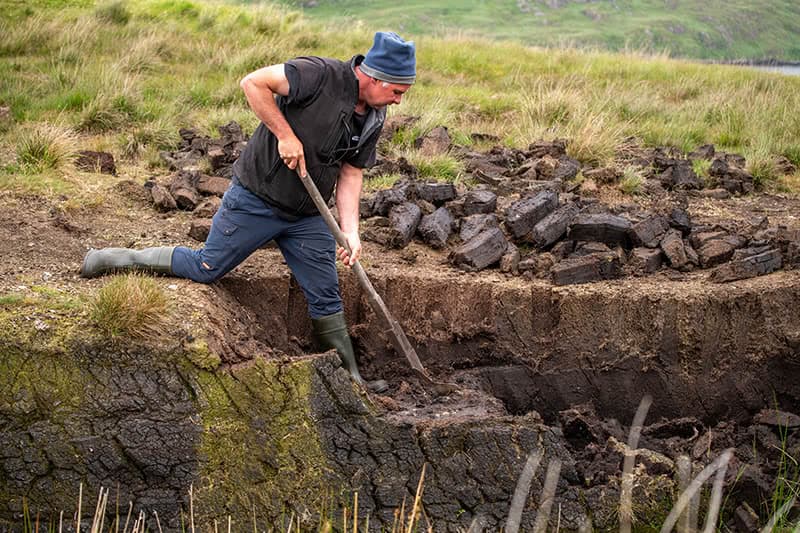
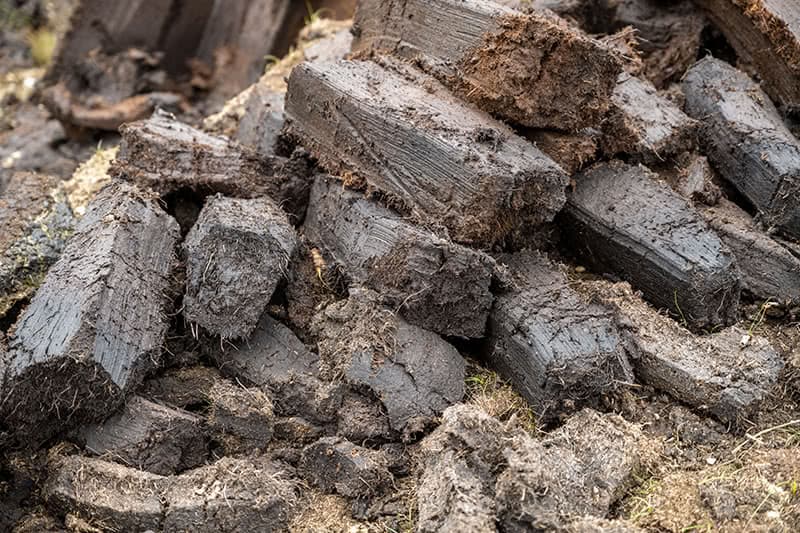
This is called “cutting turf,” and it’s a generations-old tradition in rural Ireland. Nee explains that once the logs are dried, they will be burned for fuel at his elderly mother’s house. But then he relays something else.
“We need to stop doing this at some point,” Nee says. “Environmentalists are telling us it’s hurting the planet.”
After a pause, a member of the group asks the obvious next question.
“Well then … what will your mother use for fuel?”
Nee nods for a moment and then a nervous smile appears on his face.
“Well,” he says, “good question.”
Knowingly or not, the students in that moment were presented with a brief encapsulation of a yearslong debate in Ireland over the fate of one of the island’s most prominent physical features. Approximately 20 percent of the land here is covered in peatland; specifically, bogs.
A bog is an area of wet, spongy ground that develops over thousands of years. Most begin to form when plants slowly fill in a lake. Eventually, other vegetation, especially sphagnum moss, begins to grow and cover the lake’s surface completely. In Ireland, this process started at the end of the last Ice Age, around 10,000 years ago.
Stages of a Bog's Life

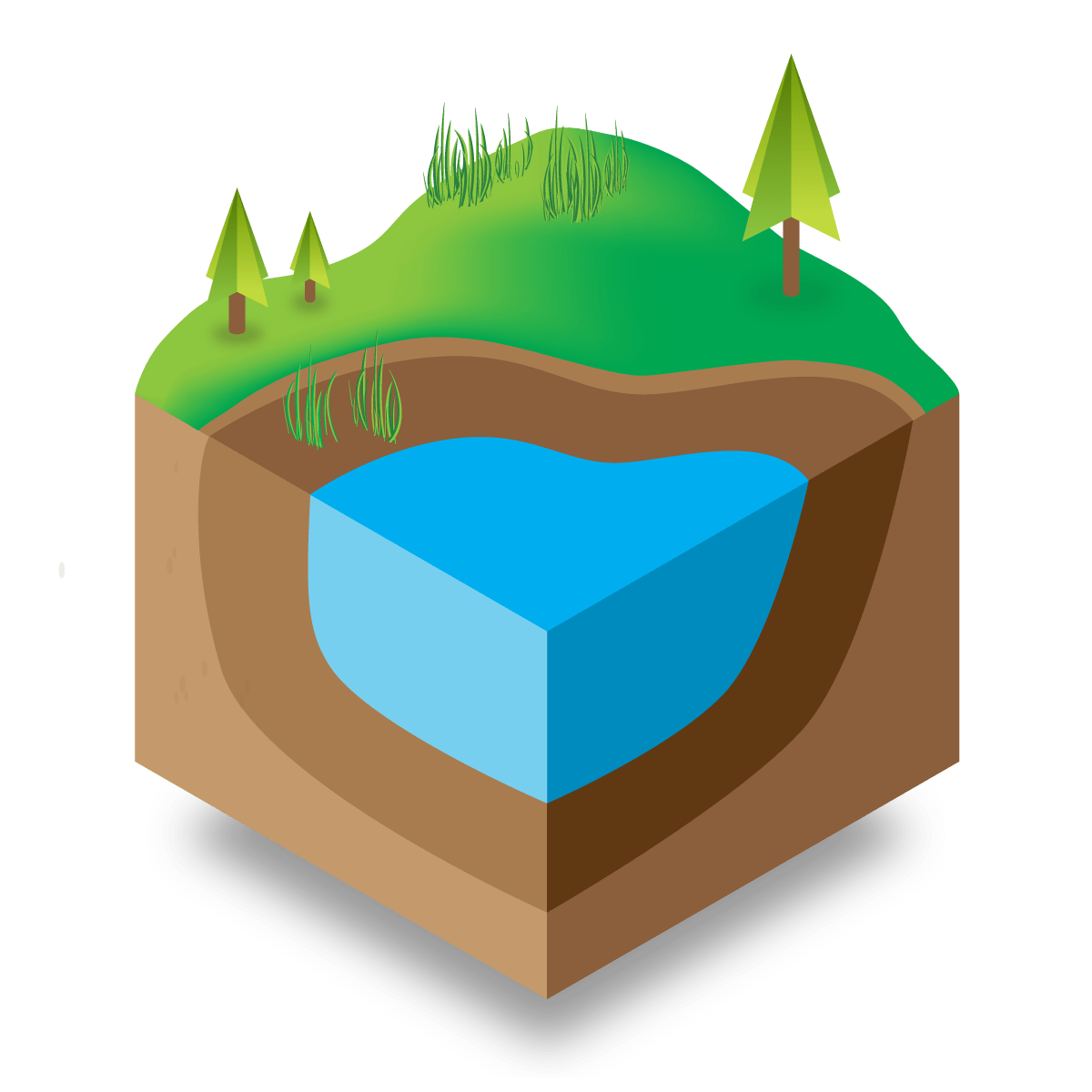
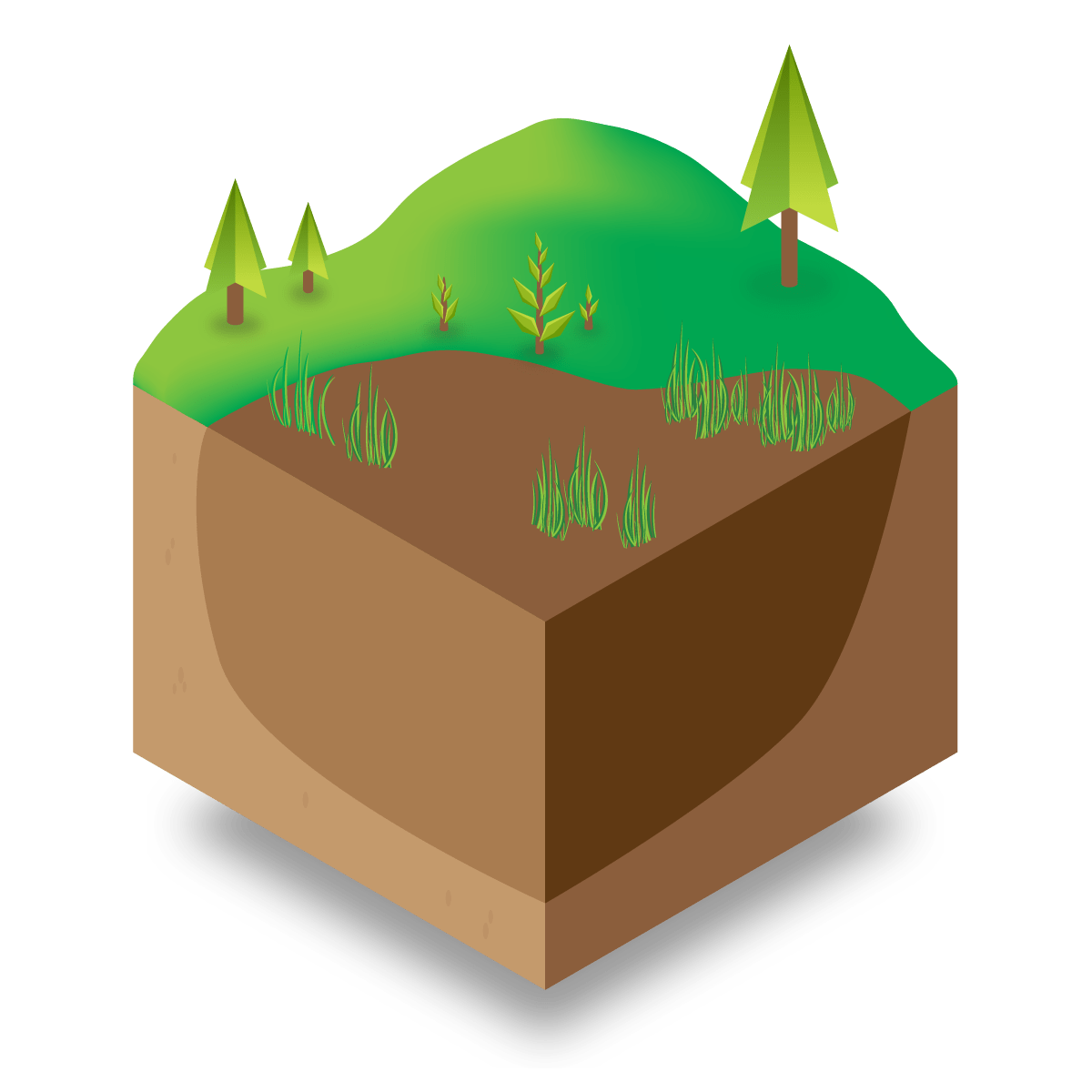
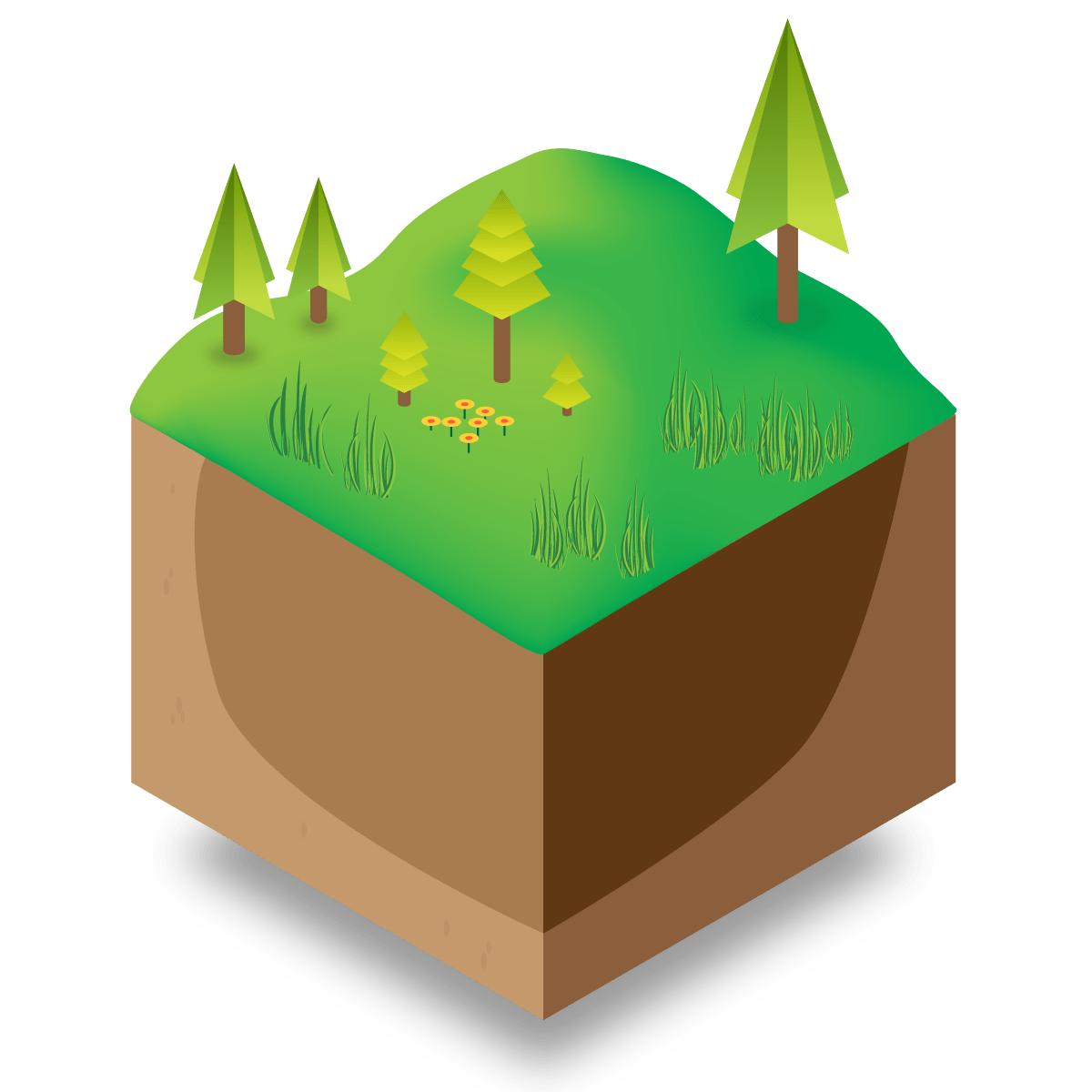
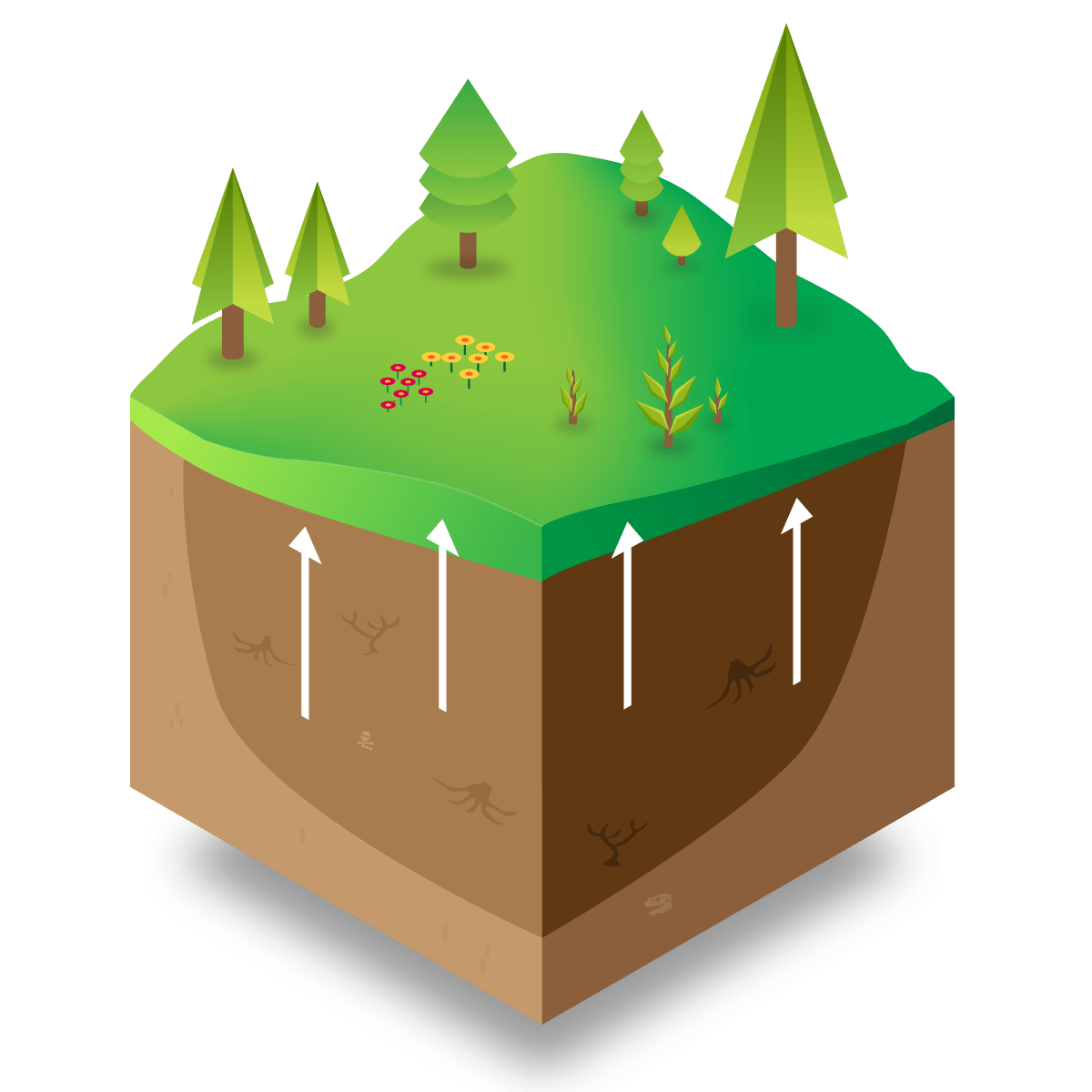
The sphagnum moss layer prevents water from evaporating and oxygen from entering. As a result, the trapped vegetation remains waterlogged and decays very slowly. This plant matter forms dark, carbon-rich peat.
The ready presence of bogs is what attracted Mariana Silva ’21 to the Irish countryside. She’s studied environmental issues all over the globe, from sustainable land-use practices in Uganda to wastewater engineering in Ecuador. Now her focus is understanding water movements in bogs, and how the knowledge she uncovers can contribute to the ultimate goal of restoring areas that bore the brunt of industrialized peat harvesting.
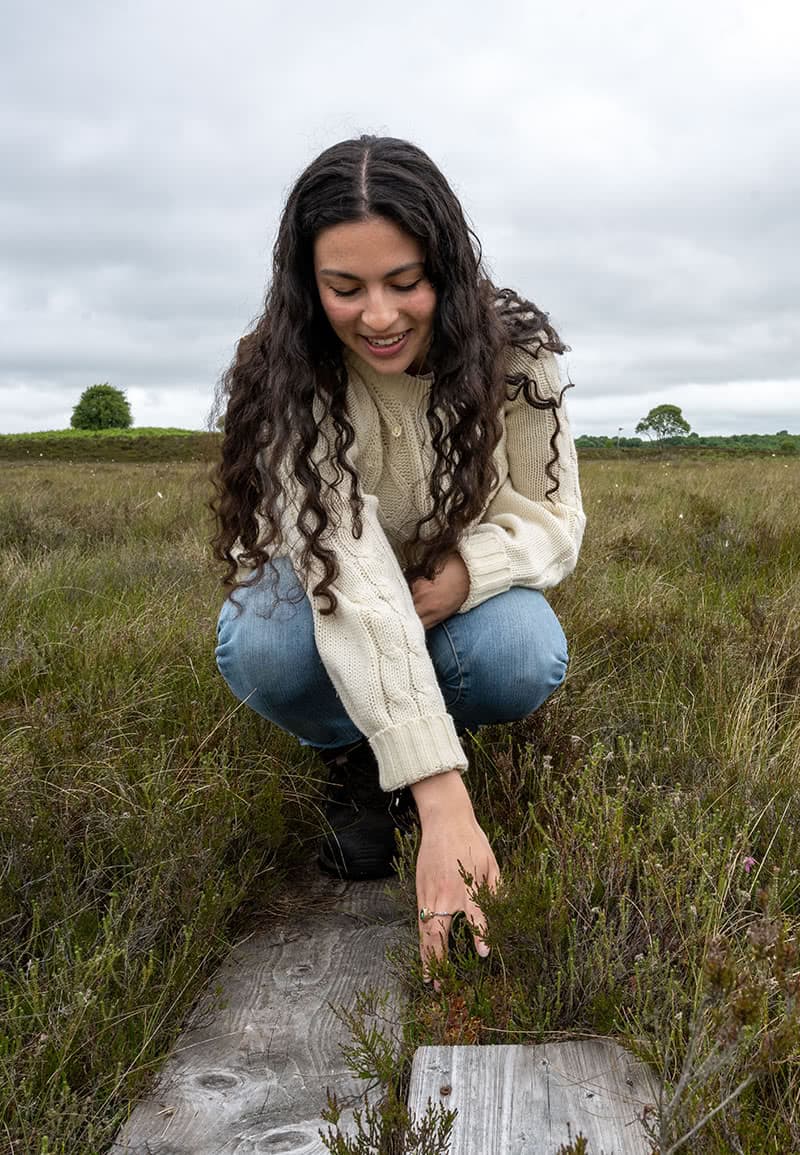
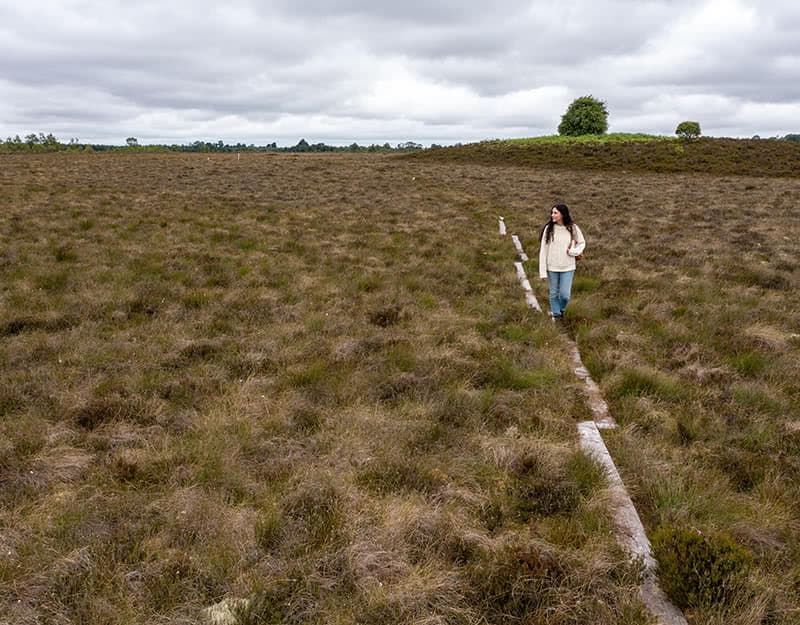
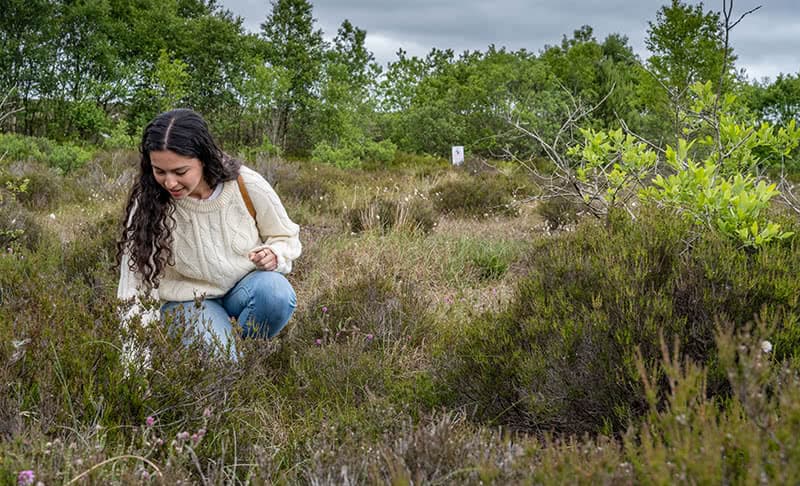
“Entire landscapes here in Ireland have been cut, drained, degraded, and now we’re left with this sort of effective wasteland that we want to try to rehabilitate,” said Silva.
Peat is a fossil fuel, an early stage in the formation of coal. In a country with no natural coal deposits, no oil and very little forestry, peat was a valuable commodity in the early days of the Irish Republic. And frankly, a source of national pride. The government set about a project of commercial harvesting, draining large swaths of midland bogs to reap the underlying peat. Soon entire power plants fueled by peat became a source of needed electricity in Ireland, providing an easy, if slightly less efficient, energy source that reduced the need for oil imports.
Turf Cutters
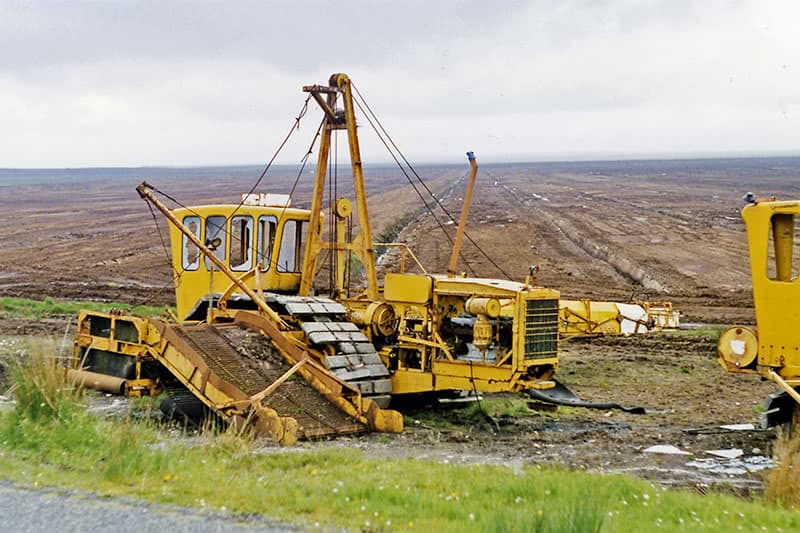
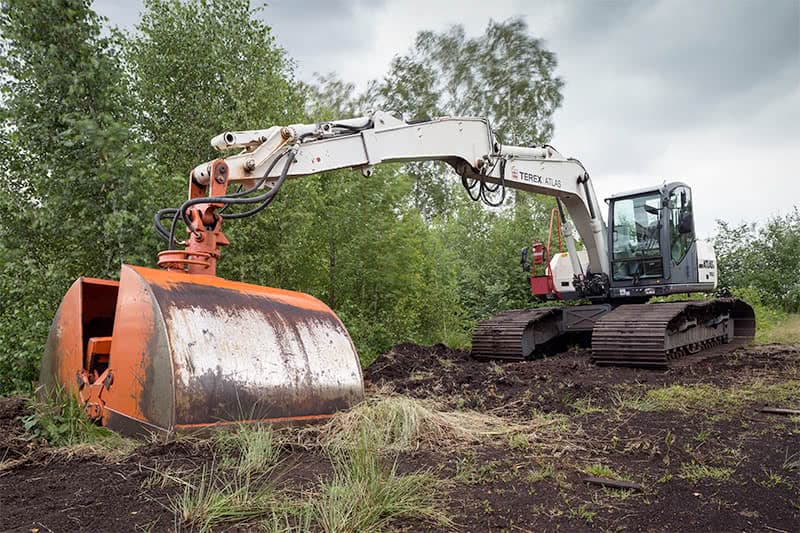
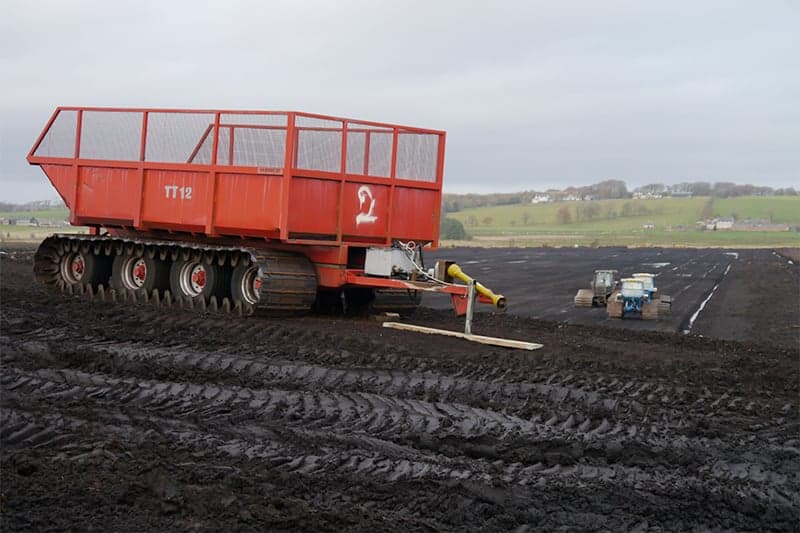
It also provided something else. Turf emits more carbon than coal does when it is burned, such that the city of Dublin banned the so-called “smoky coal” in 1990 in an effort to combat the perpetual smog that blanketed the area. Importantly, the practice of burning was allowed to continue in rural areas. But in 2018, Bord na Móna, the semi-state company that harvested peat for energy, announced it was closing 17 bogs used for production. The remaining 45 will be retired in the next seven years.
Still, there is a sense that in some ways, the damage has been done. Nearly three quarters of the bogs in Ireland have been drained and either re-purposed or used for peat harvesting.
To help restore these places, Silva is focusing on a discipline called ecohydrology, the study of the interaction between water and surrounding ecosystems. She’s examined multiple bogs in Ireland, including Clara Bog in County Offaly. Peat harvesting here dates back to the mid-18th century, but there are still vast swaths of the landscape here that are untouched, which is where Silva spends much of her time.
Walking through the bog via a network of rickety two-by-fours nailed to wood blocks, Silva takes readings and adjusts instruments that assess data points including the water table of the landscape, rainfall amounts and carbon fluxes. The data are compiled into a proprietary computer program that had not yet been used in Ireland for this purpose. It’s a system designed and established in partnership with Trinity College Dublin, the goal of which is to understand the hydrology of the bog to build a model for post-restoration efforts where the landscape has been severely degraded.
Of particular interest is stabilizing and cultivating growth of sphagnum moss, a so-called “bog builder” because of its ability to retain moisture in soil. Encouraging sphagnum growth should help to restore the peat below.
“It’s difficult to think about restoration because we are talking about rehabilitating a landscape that might take years and years of geologic time to get back,” Silva said. “But trying to do it is still crucial. Studying what we have left is a first step in figuring out how to restore it.”
Scientists and environmental activists are urging rehabilitation because of the critical role bogs can play in the fight against climate-harming emissions. Though peatlands cover only about 3 percent of the planet’s surface, they hold more carbon than all the world’s woodlands, making them an essential part of any carbon offset or mitigation strategy. But the push to curtail turf-cutting has been viewed by many rural Irish as a condescension from urban elites, or at best, a confusing directive with no clear alternative offered to replace peat as an inexpensive fuel source. Nearly one in seven Irish families still rely on peat, at least in part, to heat their homes. Some of these families harvest peat on land passed down through generations via inheritance, and view cutting turf as not only their right, but as part of their culture.
Silva seems acutely aware of her place in the public discourse.
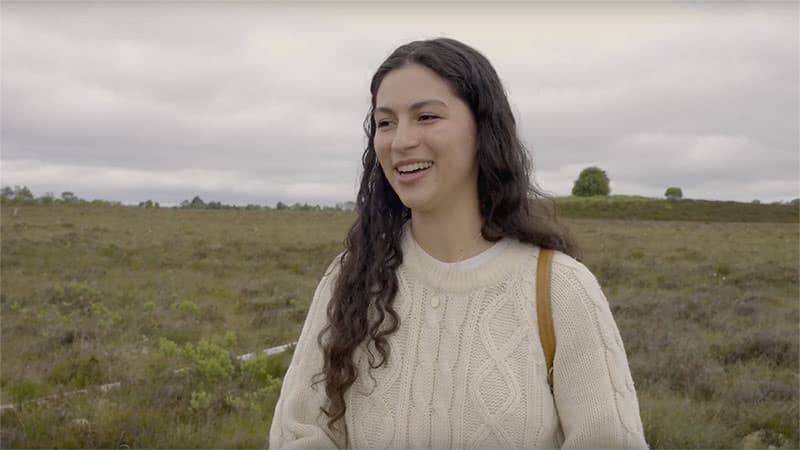
“[The Irish] have people like me who are coming all the way from the States, starting my career here, telling them not to cut turf,” she said.
“I’ve had conversations with people of older generations, and I almost have to reassure them that their lives are not the sole detriment to the environment. I’m not pointing a finger at them. I’m not blaming them. With the industrialized peat harvesting stopping, that’s already a big enough difference. This cultural practice in rural areas probably isn’t going away, and I don’t want to eradicate it. I want to validate that history.”
It’s a nuanced perspective on the issue that may actually win out in Ireland — which should be good news for people like Tom Nee. Ireland must comply with European emissions standards, and it’s an open question whether that benchmark can be met through the measures already taken; namely, whether the rural parts of the country can continue to cut and burn on a smaller, non-industrial scale. The public pushback on the issue has all but halted further enforcement of burning bans for now.
That Silva is so attuned to the discussion here is likely owed to her time in the country, where she arrived as little more than a tourist, and then stayed on as a scholar invested in its well-being. Silva came to Ireland first in 2018 as part of the Dublin Summer Program, then returned in 2021 as a Naughton Fellow, a prestigious program that affords research opportunities in STEM fields for Notre Dame students.
“I was just very interested in visiting at first,” Silva admitted. “I really liked the idea of Ireland. But when I got here, I immediately felt like this could be a place that I could call home. And that was definitely facilitated by the Notre Dame community that was here then and is still here now.
“I’ve really shown my investment in this country and the landscape of this country. People were reassured by my desire to come back. They could tell I really wanted to be here.”
